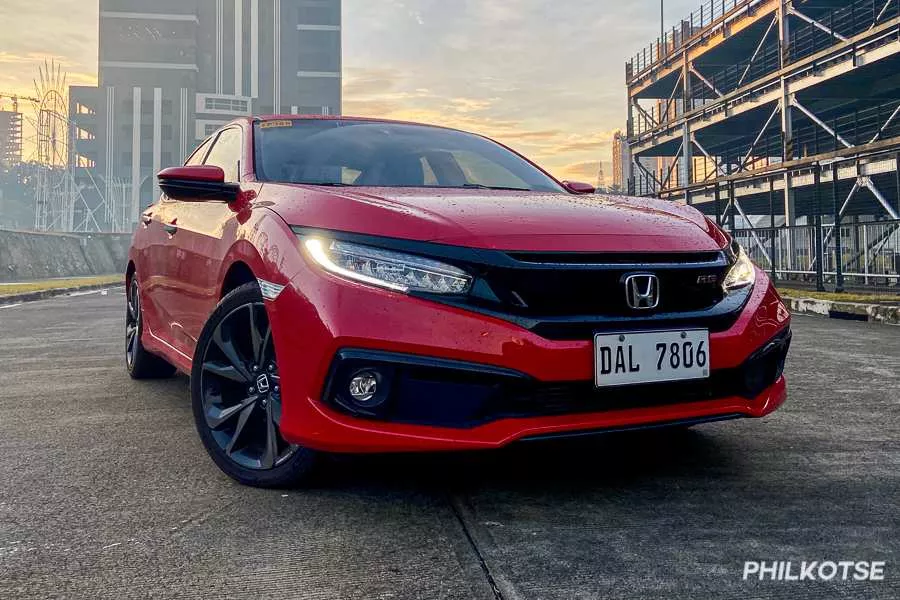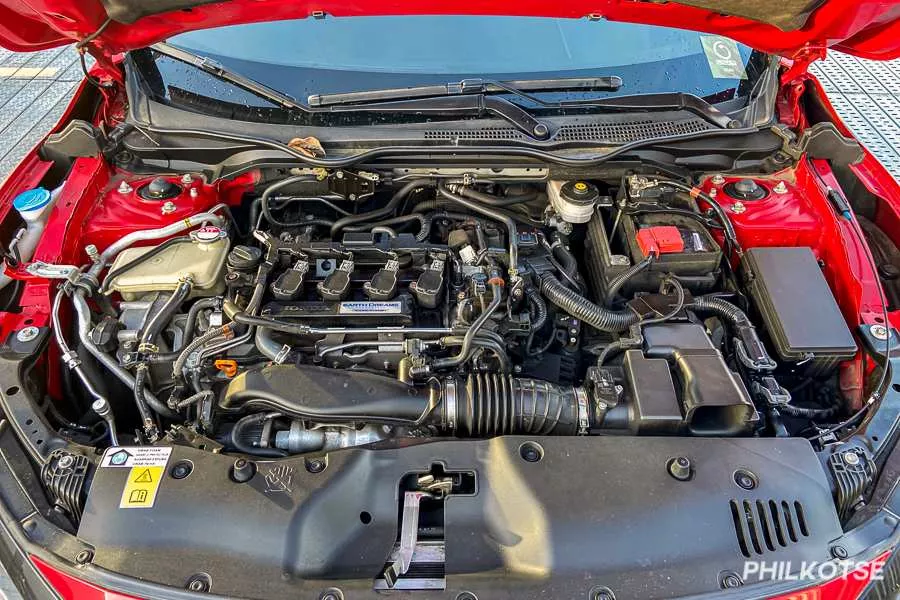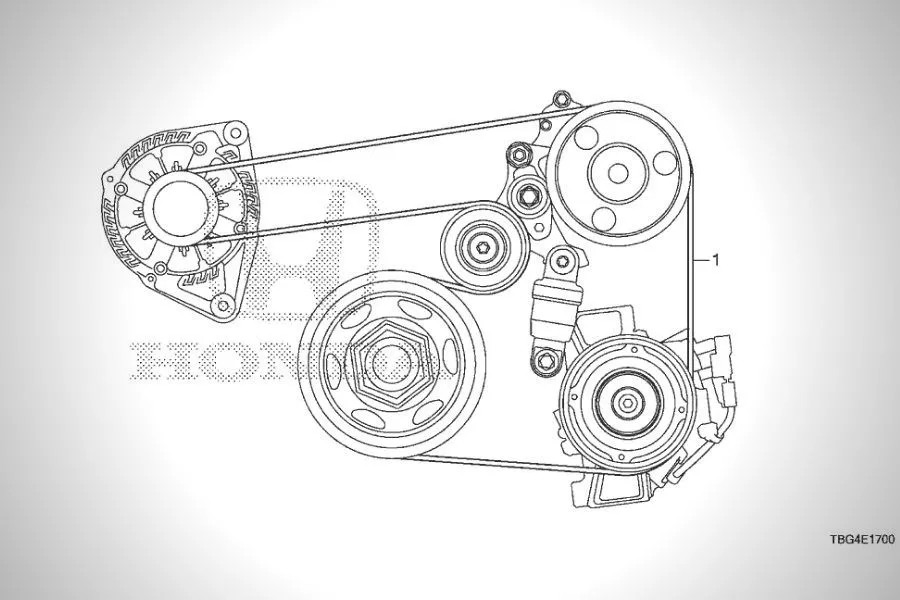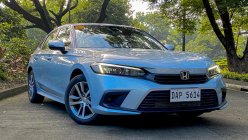The Honda Civic. It’s a popular compact sedan that offers a lot of comfort, and a sporty exterior design to boot. It is also one of the more powerful models within its market segment and price range.

The 2021 Honda Civic RS Turbo
Like any car though, the current Civic will eventually encounter problems. Sure, the 1.5-liter turbo L15B7 and the 1.8-liter R18Z that the Philippine-spec uses don’t have a long list of potential issues, but longer-term use will eventually get to it.
So, what usually breaks with the 2021 Honda Civic? Well, here are several possible future issues and how to fix them.
Honda Civic: Alternator Problems
As most of you already know, the alternator is a power-generating device. Without it functioning well, a car’s battery will drain out and once turned off, you won’t be able to start it normally.
In the context of the Civic, specifically the 1.8-liter R18Z variants, alternator belt noises might occur when the car reaches around 100,000 km on its odometer. Sure, this issue can be considered as “just an annoyance,” but just ignoring it might result in worse problems. Like the said belt snapping in the middle of EDSA. Now that’s bad.

The Civic RS Turbo's 1.5-liter turbocharged inline-4 engine
Also, it might not happen to most Civics, but rubber alternator belts do tend to wear out. Fixing this of course involves disconnecting the battery, loosening the tensioner pulleys, replacing the belt with a new one, and re-tightening the said pulleys. Also, do check online resources for the R18Z’s alternator pulley diagram for a reference on which pulleys the said belt should run through.
And no, we do not recommend those aerosol products that claim to “erase belt noises.”
Another possible Honda Civic alternator problem is of course outright damage of the said part’s mechanical bits. The usual one is bearing failure, which can be detected by sustained grinding noises.
For those who don’t know, inside any alternator is a rotor, which spins on bearings. The rotor needs to spin inside an armature coil to generate electricity. If this is the case, replacing your alternator might be a possible solution. Otherwise, you can have a car electrician fix the ailing alternator part.

A diagram of the 2021 Civic's alternator OEM belt
If it isn’t the alternator itself that’s causing your Civic to have power problems, do note that a bad battery might be at fault. This is because a bad or failing battery causes more “stress” to the alternator. With the battery unable to properly charge, the alternator might be working more than intended. For your reference, a typical car battery should have a charge of 12 volts. Below that is bad. A reading of 15 volts and more is also a sign of something wrong.
Honda Civic: AC Problems
Common AC problems for the Honda Civic usually involve a dirty cabin filter. A dirty cabin filter can cause stinky AC air, or less than optimal airflow. For the Civic, replacing the air filter involves opening the glove box and compressing it on either side to lower it further. Once done, a black box will be revealed behind the glove box. Unlatch it, take out the old filter, and place the new one.
If you suspect that the issue lies with the evaporator or condenser, one might consider getting the help of an automotive AC specialist instead.
Honda Civic: Acceleration Problems
For Honda Civic acceleration problems, let’s start with the 1.5-liter turbo. Common issues on this engine include engine oil dilution.
Oil dilution is commonly seen in cold climates. So in the Philippines, it is rather rare. There are, however, some places in the country that’s cold enough that it might happen. If that’s the case, fuel will likely stick to the engine’s cylinder walls, where it is mixed with the engine oil. And yes, this presents a problem as oil isn’t intended to be combusted inside the engine.
In most bad cases, oil dilution will cause stalling and engine misfires. In particularly bad cases, this might cause the Honda Civic some acceleration problems.
To remedy this problem, one should warm up the engine before accelerating under high RPMs. Doing so will warm up the said cylinder walls enough so the oil won’t stick to it. And finally, one should be religious in following Honda’s recommended service intervals for the Civic.

The R-series of the Civic 1.8-liter variants might have less stricter tolerances than the turbocharged 1.5-liter
As for the naturally-aspirated 1.8-liter R18Z, one common issue is knocking sounds. For most cases, knocking sounds usually come from the Evap canister purge valve so that’s normal. Although, if it comes with vibrations during acceleration, one might need to check the left engine mount. These parts after all, use rubber, and as discussed in previous articles, rubber will deteriorate in due time.
To sum it all up, the 2021 Honda Civic doesn’t have that many issues. But if it does exhibit any of the ones discussed here, we highly advise you to approach the help of a mechanic. Well, save for the air filter replacement. Also, please follow the recommended service intervals for your Honda-made sedan as it might prevent these issues in the first place.
For more car maintenance guides, car buying and selling guides, and the latest car reviews, keep it here on Philkotse.com.
Know more about Honda Civic 2026

The 2023 Honda Civic is a compact, five-door sedan. It is now in its eleventh-generation. For the Philippine market, the Civic has a price range of Php 1,583,000 to Php 1,775,000. It has three variants consisting of the V Turbo, and the RS Turbo as the top-spec trim. All of them are equipped with the Honda Sensing driver assist safety suite, and all use a 1.5-liter turbocharged VTEC inline-4 gasoline engine capable of making up to 175 horsepower and 240 Nm of torque. All trims use a continuously variable transmission (CVT).
Size-wise, the 2023 Civic is 4,678mm long, 1,802mm wide, and 1,415mm in height. It wheelbase length measures 2,735mm long, and it has a ground clearance of 134mm. Competitors of the Honda Civic for the Philippine market includes the likes of the Toyota Corolla Altis, Mazda3, Kia Forte, Nissan Sylphy, among others.
₱ 1,583,000 - ₱ 1,775,000
ExploreRecent posts
- honda civic financing guide Mar 04, 2022
- 2021 Honda Civic variant guide Dec 22, 2022
- Honda Civic vs rivals Oct 28, 2022
- Test drive: The 2017 Honda Civic RS Turbo Jan 12, 2023
















